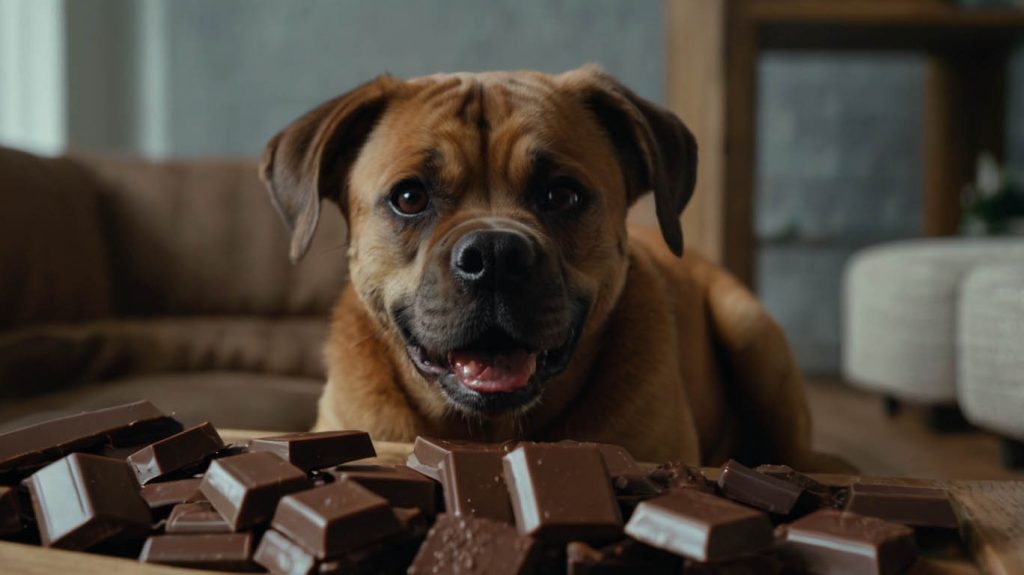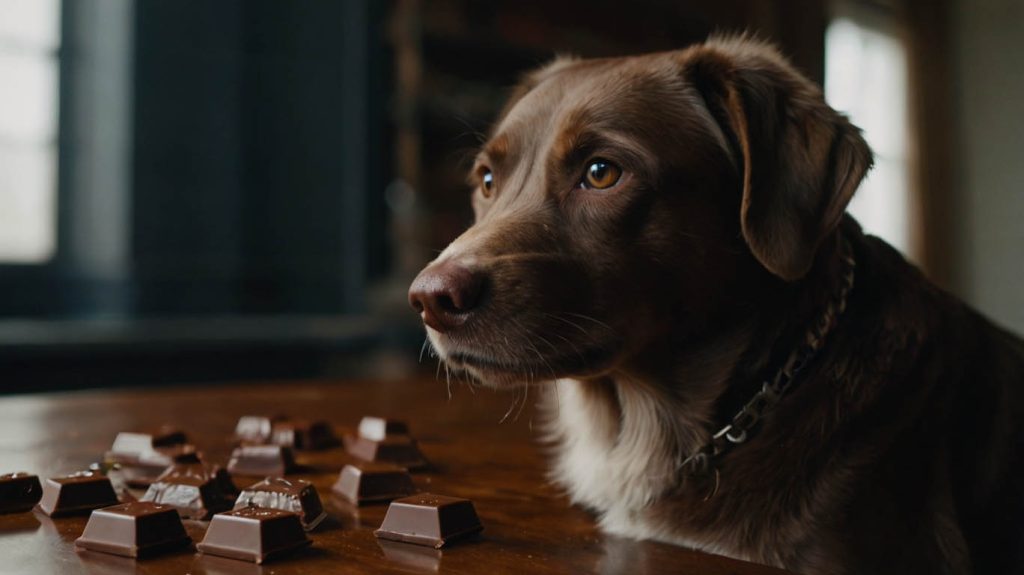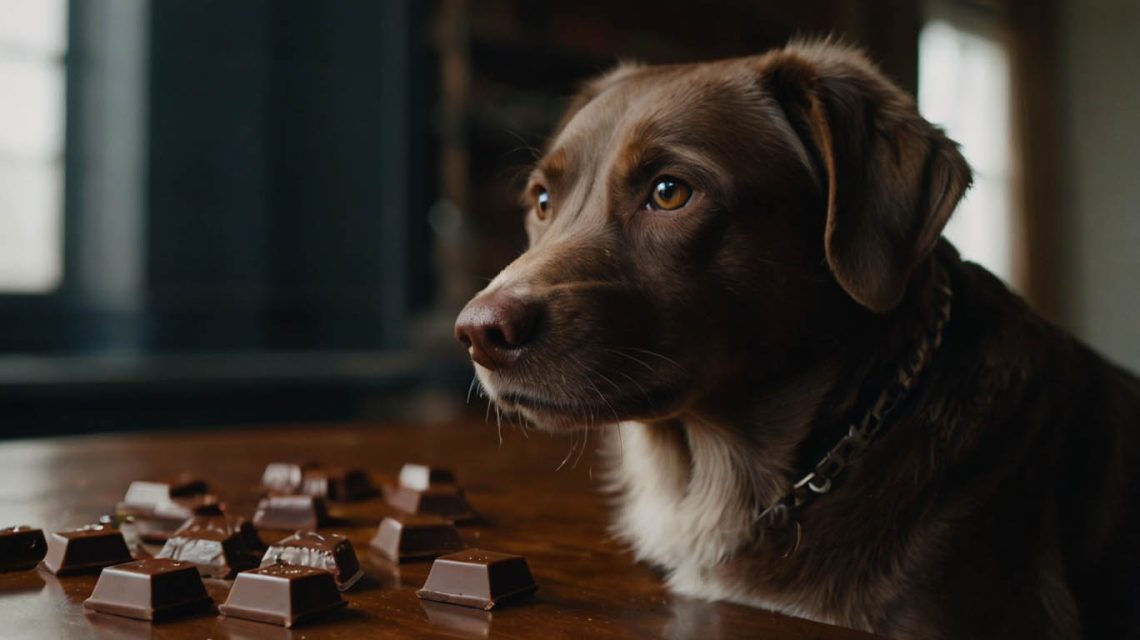“My Dog Ate Chocolate What Do I Do?” An Emergency Guide for Pet Owners
It’s a moment of pure, heart-stopping panic. You turn your back for a second, and when you look again, the chocolate bar that was on the coffee table is gone, and your dog is licking their lips with a look of pure bliss. That blissful look is quickly replaced by a wave of terror that washes over you. Your mind immediately starts to race, and you grab your phone, typing the frantic, desperate question that thousands of pet owners have typed before you: “My dog ate chocolate what do I do?”
If this is your current reality, the most important thing to do is to take a deep breath and act quickly and calmly. Your immediate, informed response is the most critical factor in ensuring a positive outcome for your dog. Therefore, this guide is designed to be your emergency action plan. We will walk you through the exact steps to take, the crucial information you need to gather, and why you must contact a professional immediately.
The Immediate Action Plan: “My Dog Ate Chocolate What Do I Do?”
In a potential poisoning, time is your most valuable asset. Do not waste it by “waiting to see” if your dog gets sick. Follow these steps precisely and immediately.

Step 1: Secure Your Dog and the Evidence
First, calmly move your dog to a safe, confined space to prevent them from eating anything else. Then, go back and gather any remaining chocolate and, most importantly, the wrapper or packaging. This is not trash; it is vital evidence.
Step 2: Gather Your “Big 3” Pieces of Information
Before you can get help, you need three key pieces of information. The professional you call will ask for these immediately.
- Your Dog’s Approximate Weight: Toxicity is dose-dependent, so a dog’s size is a critical factor.
- The Type of Chocolate: This is the most important clue. Was it milk chocolate, dark chocolate, baker’s chocolate?
- The Amount Eaten: The wrapper is essential here. How many ounces was the bar? Did they eat the whole thing or just a piece?
Step 3: Call for Professional Help Immediately
This is the most crucial step. Do not try to treat your dog at home.
- DO NOT induce vomiting with hydrogen peroxide unless specifically instructed to do so by a veterinarian. Doing it incorrectly can be extremely dangerous.
- CALL your veterinarian or an animal poison control hotline right away.
Emergency Numbers:
- Your Veterinarian’s Office or a Local 24/7 Animal Emergency Hospital
- ASPCA Animal Poison Control Center: (888) 426-4435 (A consultation fee may apply)
- Pet Poison Helpline: (855) 764-7661 (A consultation fee may apply)
When you are thinking, “my dog ate chocolate what do I do,” the only correct answer is to call a professional.
Understanding the Threat: Why Chocolate is a Problem
To understand the urgency, you need to know why chocolate is poisonous to dogs. The danger comes from two stimulants found in the cacao bean:
- Theobromine: This is the primary toxin. Dogs metabolize theobromine far more slowly than humans, allowing it to build up to toxic levels and wreak havoc on their system.
- Caffeine: Also a stimulant, caffeine contributes to the toxic effects on a dog’s heart and nervous system.

The Critical Detail: Not All Chocolate is Equally Dangerous
The severity of the situation depends entirely on the type and amount of chocolate your dog ate. This is why having the wrapper is so important.
Here is a general hierarchy of chocolate, from most to least toxic, based on the concentration of theobromine:
- Dry Cocoa Powder (Most Dangerous)
- Baker’s Chocolate (Unsweetened)
- Dark Chocolate (especially with a high cacao percentage)
- Semi-Sweet Chocolate
- Milk Chocolate
- White Chocolate (Least Dangerous – the toxicity risk is negligible, but the high fat content can still cause an upset stomach or pancreatitis).
A small amount of milk chocolate might not harm a large dog, but the same amount of baker’s chocolate could be fatal. This is why you can’t afford to guess.
Symptoms to Watch For If Your Dog Ate Chocolate
Symptoms of chocolate toxicity can take 6-12 hours to appear. Your quick action is aimed at preventing these from ever starting.
- Mild Signs: Vomiting, diarrhea, restlessness, increased thirst.
- Severe Signs: Hyperactivity, muscle tremors, seizures, rapid or irregular heartbeat.
Knowing these signs is a key part of answering the question, “my dog ate chocolate what do I do.”
What Happens at the Vet’s Office?
If the vet or poison control expert determines that a toxic dose was ingested, they will instruct you to come in immediately. The treatment plan will depend on how recently the chocolate was eaten.
- Inducing Vomiting: To get the chocolate out of their stomach before the toxins are absorbed.
- Administering Activated Charcoal: To bind to any remaining toxins in the GI tract.
- IV Fluids and Supportive Care: To help flush the system and manage symptoms like seizures or heart arrhythmias.
Prevention is the Best Medicine
The only thing better than knowing “my dog ate chocolate what do I do” is never having to ask the question.
- Store Chocolate Securely: Treat it like any other poison in your home. Keep it in high cupboards, sealed containers, or the refrigerator—well out of your dog’s reach.
- Educate Everyone: Make sure every member of your family and any guests know that chocolate is off-limits for your dog.
- Be Vigilant During Holidays: Be extra careful around Halloween, Christmas, Valentine’s Day, and Easter when there is often an abundance of chocolate in the house.
Your Quick Action is Your Dog’s Best Hope
That gut-wrenching moment you realize, “my dog ate chocolate what do I do,” is terrifying. But remember, you are your dog’s first responder. By remaining calm, gathering the crucial information, and making that immediate call for professional help, you are taking the most powerful steps you can to protect them.
Have you ever had a chocolate scare with your dog? Share your story in the comments below to help other owners be prepared.


